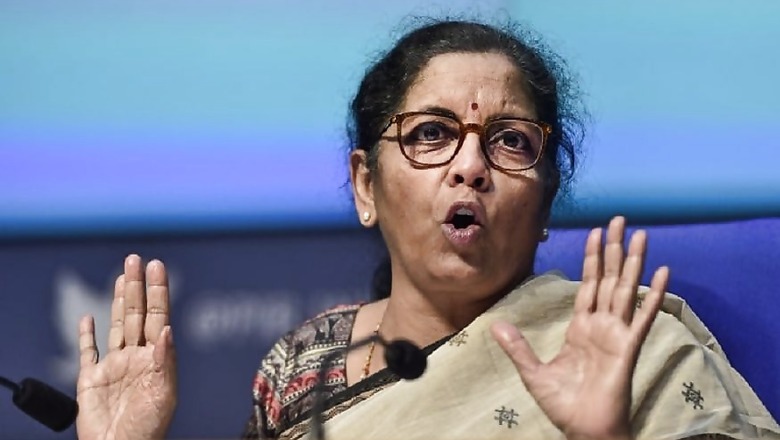
views
The fourth tranche of announcements that talked about economic reforms from the fourth of 21 slides onwards, is more about packaging and repackaging than ‘reforms’. True, in her 16 May 2020 presentation, Finance Minister Nirmala Sitharaman – the minister facing the greatest challenges and stress in Prime Minister Narendra Modi’s Cabinet, and all respect to her for working round the clock to get the economy into shape – has embraced the dreaded R-Word. But labelling a policy change as ‘reform’ may get accolades from supporters, it will not deliver outcomes. Every change in policy cannot be called a reform. The government needs to use the word sparingly, accurately and with conviction.
Reforms…
The 15 May 2020 announcements in the third tranche of for ushering in agricultural reforms were real, and if pushed to completion, will deliver outcomes of greater flexibility for farmers. The fourth tranche straddles both, reforms and policy changes. On the reforms side are a few proposals. Raising the FDI (foreign direct investment) limit in defence manufacturing under automatic route to 74% from 49% is a reform. Privatisation of power distribution in Union Territories is also a reform that hopes for better service to consumers and greater efficiency in operations.
Opening up the space sector to India’s private sector is a reform too. It will allow private firms to launch satellites and space-based services. Giving access to ISRO (Indian Space Research Organisation) facilities to private entrepreneurs could help leverage them better. Above all, allowing private ambitions for planetary exploration and outer space travel on the one side and a geospatial data policy on the other is a big door. But how far it will open remains to be seen. This is a reform. As is allowing private sector in atomic energy by establishing research reactors in PPP mode for the production of medical isotopes, use irradiation technology for food preservation, and technology development cum incubation centres for synergies between research facilities and tech-entrepreneurs.
...and policy changes
Upgradation of industrial infrastructure by making industrial land available is important, even crucial – but it is not a ‘reform’. It is good to know that the government has identified 3,376 industrial parks, estates and special economic zones across 500,000 hectares or about 1.2 million acres of land for new investments. These will certainly enable new investments. For context, this aggregate land is about 300 times more than what the South Korean steel giant Posco wanted in Orissa for its $20 billion project before it was unceremoniously thrown out, 12 years after it initiated a 12 million tonnes per annum steel plant. If such land is now made available, one big hurdle towards setting up factories is behind us, and the decision must be lauded.
Land is one of the two major hurdles before entrepreneurs. In an ORF-AMCHAM survey of US companies, three out of five CEOs said that land acquisition is an area that creates major hurdles and needs urgent attention from the Indian government. “Delays in land acquisition and in securing environmental clearances alone, caused the stalling Rs 4.3 trillion worth of projects, of which 60% were government ones,” the report stated.
But to label the availability of a land bank as reform is stretching the term. Modi’s attempt at land reform was through the Right to Fair Compensation and Transparency in Land Acquisition, Rehabilitation and Resettlement (Amendment) Ordinance, 2015. He tried hard to push the Ordinance thrice but failed and had to retrace his steps due to backlash from farmers and the Opposition.
Likewise, the decision to introduce commercial mining in the coal sector for self-reliance in its production through competition, transparency and private sector participation is a good step. As is the greater flexibility given to entrepreneurs. Offering 50 blocks immediately shows quick decision making by the government. But these are policy changes and their executive execution – not economic reforms.
Awarding three out of six airports for operation and maintenance on PPP (public-private partnership) basis is a good step. But it’s not reform – the policy is already in place. Further, removing restrictions on air space utilisation by airlines, reducing fuel use and through them creating a “positive environmental impact” are good decisions. That they will reduce the cost of flying by Rs 1,000 crore may be insignificant in the larger scheme of things, its impact may be marginal on flyers. But these are policy steps, not reforms. Reforms happened when the sector was opened up to private investments.
All proposals have their place, their importance. Many reforms are needed, some desperately. It is heartening to hear Modi-Sitharaman listening to voices crying for reforms. In a bid to assuage these concerns, they are attempting to modify policies, which is good. But as far as reforms go, the government needs to rethink its economic architecture, even ideology, from first principles upwards. The previous regimes were dominated by the Left. The laws, rules and regulations they made served those principles. If Modi wants to take the next big leap – and time is opportune for it through the ongoing COVID19 health-economic crisis – he will need to stand on stronger foundations from which to launch reforms.
Need to Shift Focus from Control to Decontrol
The most disappointing aspect of packaging routine government policy work as reforms is that the government is leaning on those who have benefited from the strangulation of the Indian economy to de-strangulate it. More than Prime Minister Narendra Modi or Finance Minister Nirmala Sitharaman, what is being touted as ‘economic reforms’ in the fourth tranche of announcements has the dominating signature of India’s bureaucrats. Not politics but the bureaucracy seems to be driving and executing economic policy.
For instance, on the one hand, the announcement says that there will be a liberalised regime in coal sector and ease of doing business measures, such as mining plan simplification, will be taken. But just two lines later, we are back to the command and control pattern of the 1970s that states the government will “allow for automatic 40% increase in annual production”. Why should an entrepreneur be bound to the whim of a bureaucrat to increase production beyond 40% if there is a sudden spurt of coal? Where has this number been cobbled up from – why not 25% or 80% or 3,813.27%? This is petty thinking, petty in in imagination, petty in execution.
The overarching and disappointing sense we get is that the government is thinking it is living in the past as far as policy actions go. It is attempting to micromanage an economy that has scaled up and moved on. This is not the era of shortages of the 1950s and 1960s. This is not the time of commanding heights and excessive controls of the 1970s. This is not even about the opening up of sectors and liberalisation of the 1990s. These conversations are behind us. This is a 21st century India. The arrogance of control has to give way to a focus on decontrol. The conversations have to respect entrepreneurs, job and wealth creators. Policy conversations with businesses and investments have to be more nuanced, more equal. Freedom has to be the reforms destination, light-touch regulation the policy path.




















Comments
0 comment